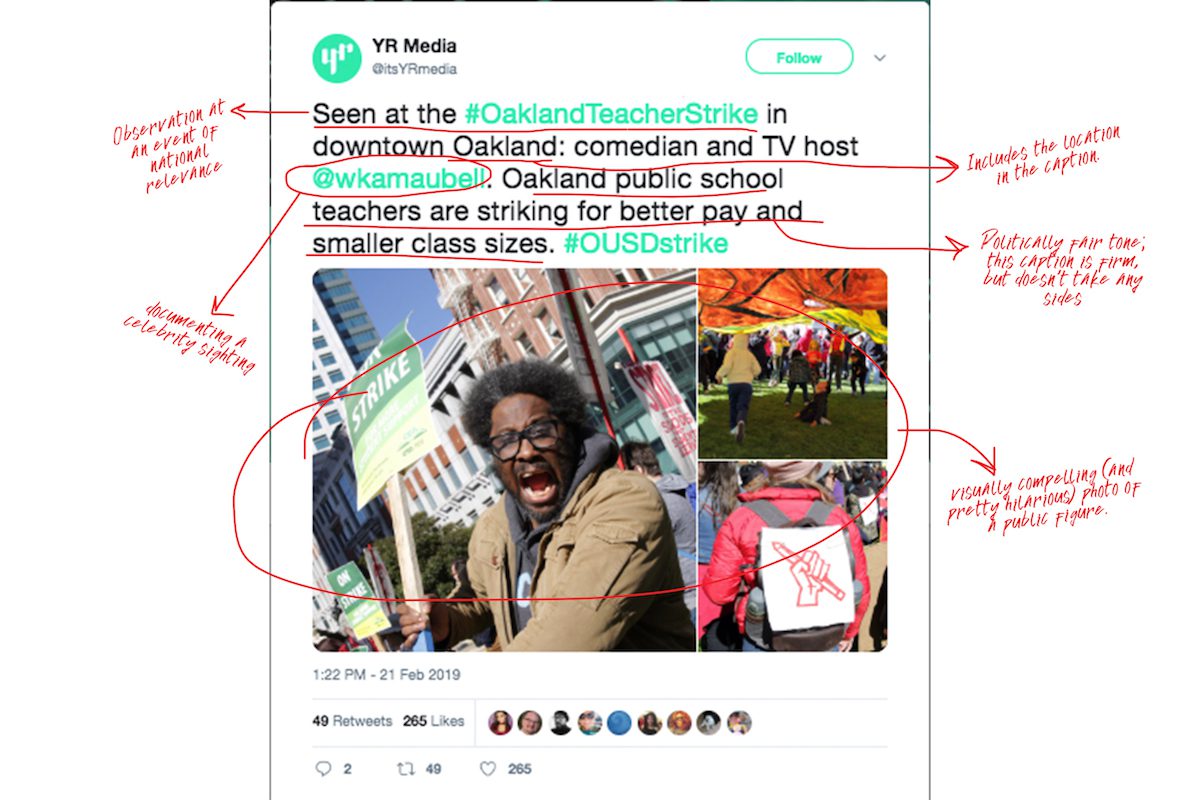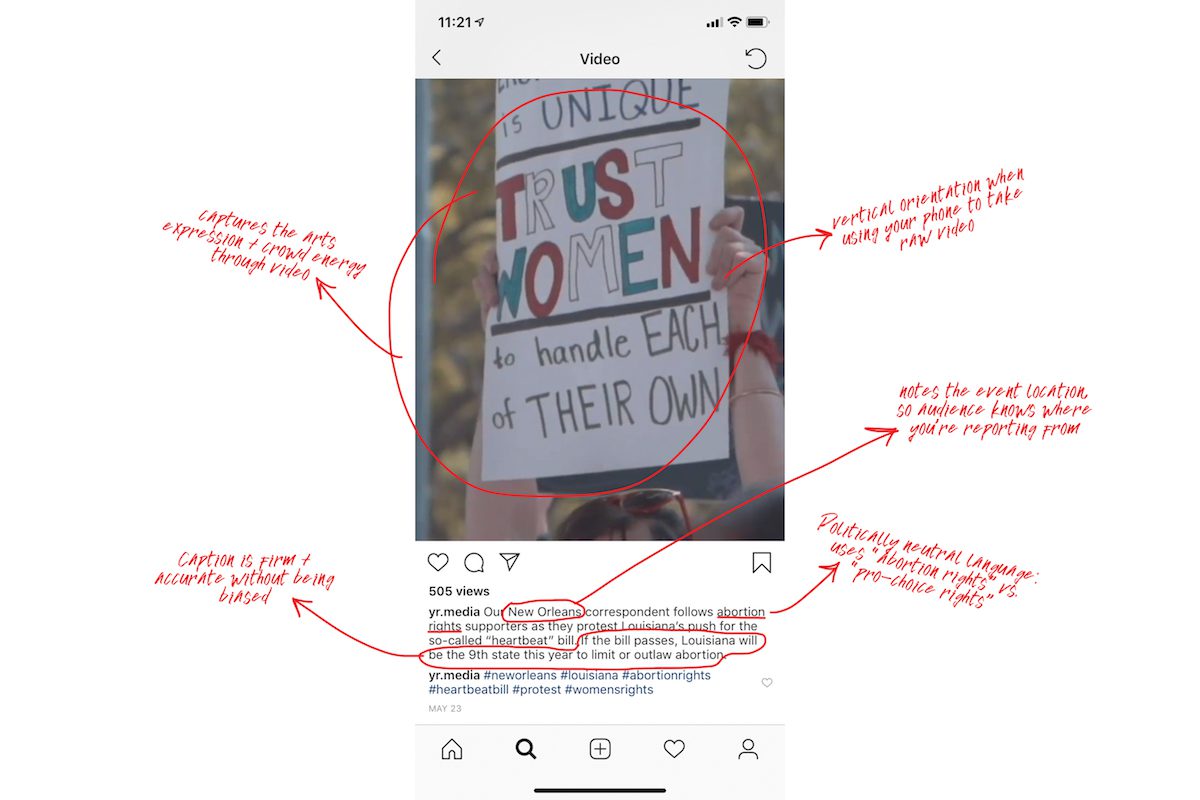
Sometimes delivering the news happens from a desk and sometimes news is happening so fast that you can’t even get back to your desk to type up a polished story. YR Media uses Twitter and Instagram to showcase live reporting at events of national relevance. If you anticipate being in a position to provide on-the-ground coverage of a significant happening, this DIY will show you how it’s done.

Equipment: Smartphone (must have Internet, camera and audio functions), Twitter app, extra battery and phone charger, wifi hotspot (recommended, there can be connectivity issues at crowded sites), notepad & paper (to keep track of names, ages, and contact info), editor’s cell phone number, bus pass or other means of transportation, map, schedule of events. Also recommended: DSLR for higher quality photos.
Examples of past coverage: Lobby for Our Lives in DC, Climate Strike in San Francisco, Oakland Unified School District Teacher Strike, Black Lives Matter
Tone: Politically fair, not preachy, conversational but firm, accurate (avoid assumptions), lots of observations about vibe/emotions/energy, first-person voice, gives audience the insider’s scoop, no profanity unless quoting (check with editor first)
Editorial process: You’ll work closely with a YR Media editor/producer, who will help guide your reporting. Constant communication with your editor is critical, so you can update them with information about the crowd, logistics, delay, conscious of your scene, when do you need to give your editor more info. Your editor may ask you for more of a certain type of media (photos, videos, etc).
What we’re looking for:
Direct quotes: What do you see/hear/sense that people watching from home might miss? These posts remind us that you are actually THERE, and you have the insider’s viewpoint. Keep your ears open for funny, poignant, surprising, or revealing quotes you hear at the event. You’re giving insight into how people really feel.
To get these quotes:
- Listen to conversations (use the appropriate #overheard hashtag) or have a list of questions ready to go
- Interview people and use first/last name and age when you can (It’s important that you tell them you are working on a story for Youth Radio and that their quotes/photos could end up published on our site)
- Remember to use quotation marks and check your spelling
- When possible, include a photo

Photos: Look for “moments,” spotted celebrities, public figures or visually compelling participants (ex: in costume, holding signs, leaders, people taking action) with quote/caption. We want crowd photos as well as close-ups.
- Ask for first/last name, age and location
- Think about representing the full diversity of marchers, from all demographics, especially marginalized voices.
- Write a caption (1-4 sentences) for context. Use quotation marks for direct quotes.
- Note location if you have space.
Make sure to use appropriate hashtags! Please send us photo files (without retouching!) that are in-focus and well lit.

Caption: Here’s an example of a successful on-the-ground photo+caption tweet. Click on the image to see the post on YR Media’s Twitter feed.
Video: Take raw video when something is happening with lots of movement/action, or if you have a chance to do an interview with a newsmaker. Your video can be evidence of how certain events went down, from the size of the crowd to clashes between protesters, to arts expression around a topic.
- If using your phone, keep it vertical and try to keep a steady shot. No sudden movements.
- Try to get good lighting/angles so you can see the action.
If the students are chanting, or doing anything else particularly interesting/compelling/newsworthy, you may want to shoot 30-45 secs of video from your smartphone. Only record video for 5 minutes or less at one time or it’s too big to email.

Caption: Here’s an example of a successful video+caption Instagram post. Click on the image to watch the video on YR Media’s instagram feed.
Safety/Ethics: For any event where you feel the situation is becoming unsafe, your first priority is to remove yourself from danger. Identify yourself as a journalist (you cannot participate as both a protester and a reporter), and make sure to have your editor’s cell phone number handy. Check in often with your editor if circumstances change or if you need guidance on where to go to report.